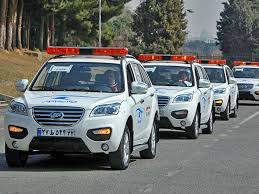
Vehicles are an integral part of modern society, serving as the primary mode of transportation for people and goods. From cars and trucks to motorcycles and bicycles, the variety of vehicles available today reflects the diverse needs and preferences of users. This article explores the different types of vehicles, their history, technologies, environmental Alquiler de coche en fuerteventura sin franquicia, and the future of transportation.
1. Types of Vehicles
1.1. Land Vehicles
Cars: Cars are the most common type of personal vehicle. They vary in size, design, and functionality, ranging from compact sedans to spacious SUVs.
Trucks: Trucks are designed for transporting goods. They come in various configurations, including light-duty pickups and heavy-duty commercial trucks.
Motorcycles: Motorcycles are two-wheeled vehicles that offer a balance of speed and agility. They are popular for both recreation and commuting.
Bicycles: Bicycles are human-powered vehicles that promote sustainability and fitness. They come in various styles, including road bikes, mountain bikes, and hybrids.
1.2. Water Vehicles
Boats: Boats are designed for navigation on water bodies. They include small fishing boats, luxury yachts, and larger commercial vessels.
Ships: Ships are larger than boats and are built for deep-water navigation. They include cargo ships, cruise ships, and naval vessels.
1.3. Air Vehicles
Airplanes: Airplanes are fixed-wing aircraft designed for passenger and cargo transport. They range from small private planes to large commercial jets.
Helicopters: Helicopters are rotary-wing aircraft capable of vertical takeoff and landing. They are often used for rescue operations and urban transport.
2. History of Vehicles
The evolution of vehicles dates back thousands of years. The earliest vehicles were simple wooden carts pulled by animals. The invention of the wheel around 3500 BC marked a significant advancement in transportation.
The 19th century saw the introduction of steam-powered vehicles, followed by the development of the internal combustion engine in the late 1800s. This led to the mass production of automobiles in the early 20th century, revolutionizing personal transportation.
3. Vehicle Technologies
3.1. Internal Combustion Engine (ICE)
The traditional vehicle engine operates by burning fuel (gasoline or diesel) to produce power. While effective, ICEs emit greenhouse gases, contributing to climate change.
3.2. Electric Vehicles (EVs)
Electric vehicles use electric motors powered by rechargeable batteries. They produce zero tailpipe emissions and are considered more environmentally friendly than traditional vehicles.
3.3. Hybrid Vehicles
Hybrid vehicles combine an internal combustion engine with an electric motor. They optimize fuel efficiency and reduce emissions by using both power sources.
3.4. Autonomous Vehicles
Autonomous vehicles, or self-driving cars, use advanced sensors and AI to navigate without human intervention. This technology aims to improve safety and efficiency on the roads.
4. Environmental Impact
The environmental impact of vehicles is a major concern. Traditional gasoline and diesel vehicles contribute to air pollution and greenhouse gas emissions. In contrast, electric and hybrid vehicles offer a cleaner alternative, but their production and disposal also pose environmental challenges.
Governments worldwide are implementing regulations to reduce vehicle emissions and promote cleaner technologies. Incentives for electric vehicle adoption, such as tax credits and charging infrastructure development, are becoming more common.
5. The Future of Transportation
The future of transportation is poised for transformation. Key trends include:
5.1. Electrification
As battery technology improves, electric vehicles are expected to become more prevalent, leading to a reduction in fossil fuel dependency.
5.2. Shared Mobility
Car-sharing and ride-sharing services are reshaping urban transportation. This trend promotes efficient vehicle usage and reduces the number of cars on the road.
5.3. Smart Infrastructure
Cities are investing in smart infrastructure that incorporates technology to improve traffic management, reduce congestion, and enhance safety.
5.4. Sustainable Practices
There is a growing emphasis on sustainable transportation practices, including public transit expansion, cycling infrastructure, and incentives for using eco-friendly vehicles.
Conclusion
Vehicles are a cornerstone of modern life, enabling mobility and connectivity. As technology advances, the automotive landscape will continue to evolve, offering new opportunities and challenges. By embracing sustainable practices and innovative solutions, society can pave the way for a more efficient and environmentally friendly transportation system.